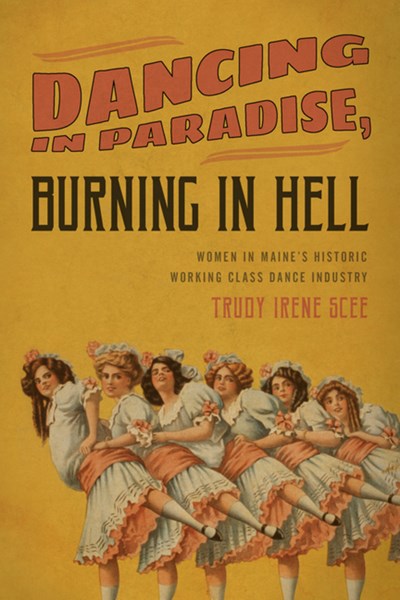Historian Trudy Irene Scee explores the dance industries of Maine, how they were effected by national events, and how events in Maine effected national trends. She explores the difficulties women faced in the early 20th century and how they turned to new forms of entertainment to make money and pay for food and shelter. The focus of the book centers on the 1910s through the 1970s, but extends back into the 1800s, largely exploring the dance halls of the nineteenth century (be they saloons with hurdy-gurdy girls and the like, or dance halls with women performing the early forms of taxi- and belly dancing), and includes a chapter on belly dancing and other forms of dance entertainment in Maine in the 1980s to early 2000s. The newest form of dance—striptease dancing—is not be examined specifically, but is discussed as it pertains to the other dance forms. The book forms a unique look at one segment of Maine history and is a terrific addition to the literature on women’s issues.
An often overlooked segment of Maine (and American) history is the story of women in the working class dance industries. Generally looked upon with a gasp of shock, burlesque and vaudeville dancing, and later taxi dancing and marathon dancing, were often the only way for women to survive (In taxi dancing, men paid women by the dance; while marathon dancing was a contest and women tried to outlast each other on the dance floor.) In turn-of-the-20th-century Maine, this new form of dancing was taking off, as it was elsewhere in the country. Historian Trudy Irene Scee explores the dance industries of Maine, how they were effected by national events, and how events in Maine effected national trends. She explores the difficulties women faced at that time and how they turned to new forms of entertainment to make money and pay for food and shelter. The focus of the book centers on the 1910s through the 1970s, but extends back into the 1800s, largely exploring the dance halls of the nineteenth century (be they saloons with hurdy-gurdy girls and the like, or dance halls with women performing the early forms of taxi- and belly dancing), and includes a chapter on belly dancing and other forms of dance entertainment in Maine in the 1980s to early 2000s. The newest form of dance—striptease dancing—is not be examined specifically, but is discussed as it pertains to the other dance forms. The book forms a unique look at one segment of Maine history and is a terrific addition to the literature on women’s issues.

